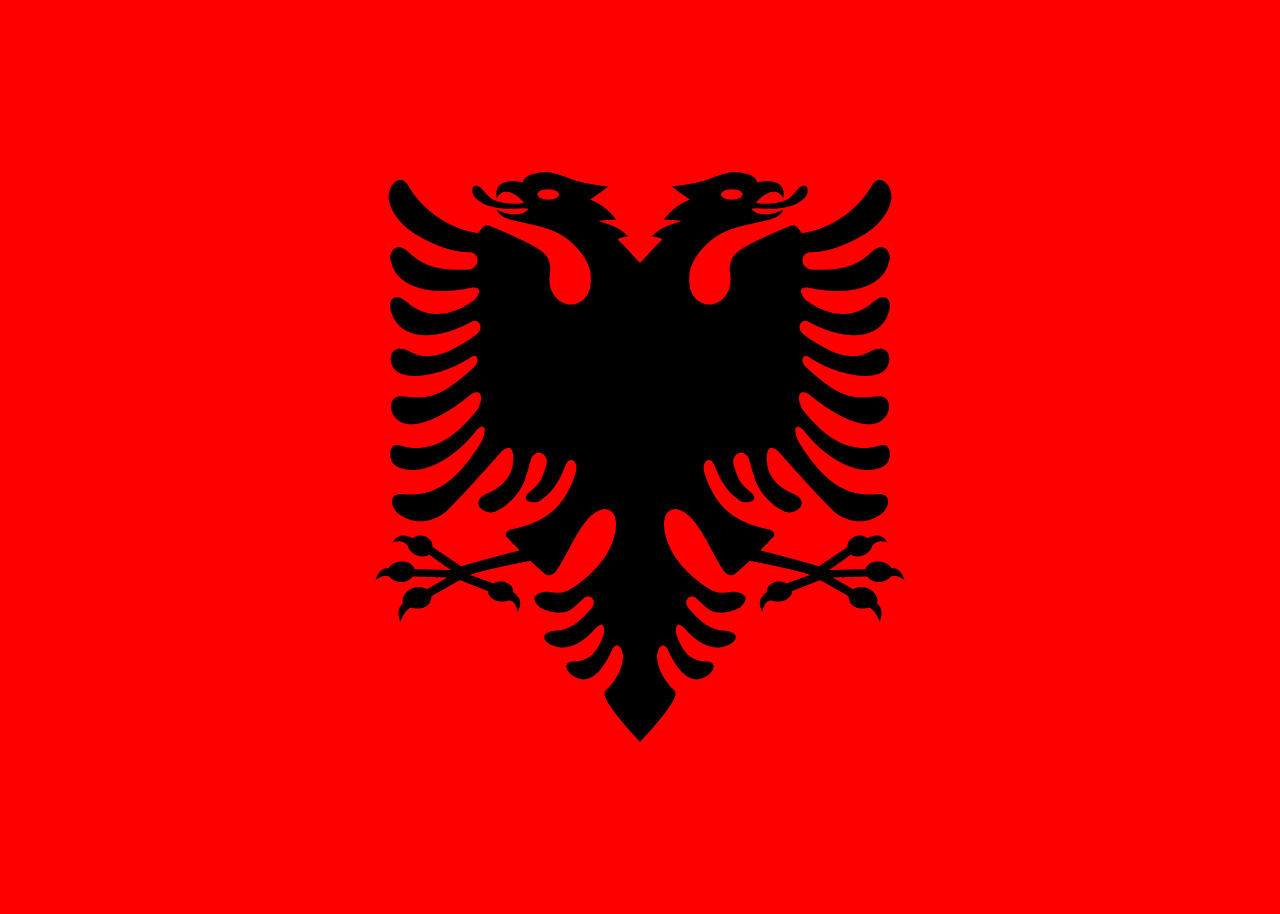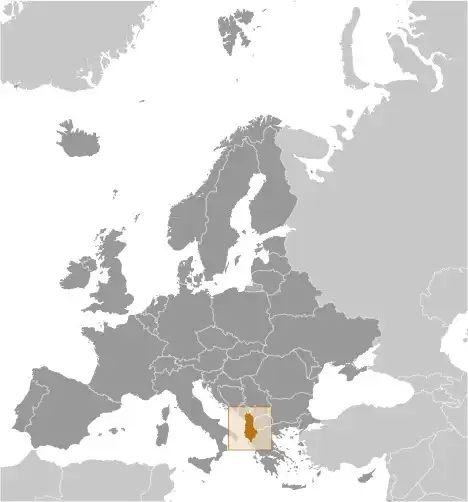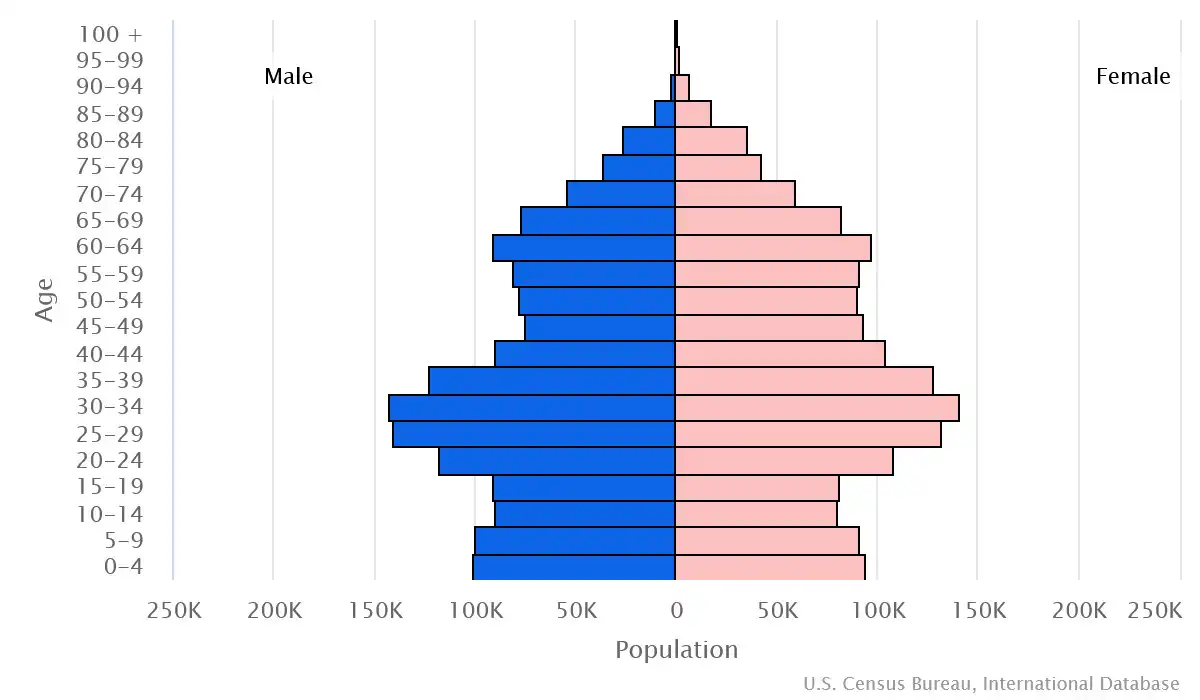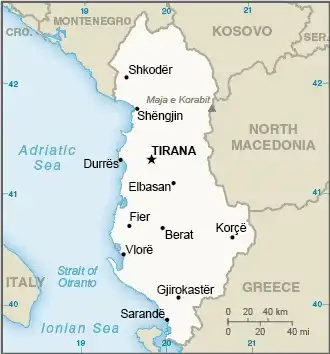
Albania Country Profile
Key Facts of Albania

| Government type: | parliamentary republic |
| Capital: | Tirana (Tirane) |
| Languages: | Albanian 98.8% (official - derived from Tosk dialect), Greek 0.5%, other 0.6% (including Macedonian, Romani, Vlach, Turkish, Italian, and Serbo-Croatian), unspecified 0.1% (2011 est.) |
Albania Demographic Data
Ethnic Groups in Albania(2011 est.)
Religious Groups in Albania (2011 est.)
Age pyramid of Albania

Albania Economy Statistics
Economic overview of Albania
upper-middle -income Balkan economy; EU accession candidate; growth bolstered by tourism, services, construction, and private consumption; fiscal consolidation through revenue collection to address public debt; challenges include weak governance, corruption, climate adaptation, vulnerability to energy sector shocks, and emigration of workers
Albania Real GDP (purchasing power parity) in Billion $
Albania Real GDP per capita in $
Albania's Exports & Imports in billion $
Top 5 Import Partnerin 2022 (66%) of Albania
Top 5 Import Commodities in 2022 of Albania
- refined petroleum ⛽
- garments 👕
- electricity ⚡
- cars 🚗
- raw iron bars 🛠️
Top 5 Export Partnerin 2022 (67%) of Albania
Top 5 Export Commodities in 2022 of Albania
- garments 👕
- footwear 👞
- iron alloys 🪓
- electricity ⚡
- crude petroleum 🛢️
Geography of Albania
Map of Albania

Land and Water Distrubtion of Albania
Natural Resources of Albania
- petroleum 🛢️
- natural gas 💨
- coal ⚫
- bauxite 🪨
- chromite 🪨
- copper 🟧🪙
- iron ore ⛓️
- nickel 🪙
- salt 🧂
- timber 🌲
- hydropower 💧⚡
- arable land 🌱
Climate inAlbania
mild temperate; cool, cloudy, wet winters; hot, clear, dry summers; interior is cooler and wetter
History of Albania - a Summary
After declaring independence from the Ottoman Empire in 1912, Albania experienced a period of political upheaval that led to a short-lived monarchy, which ended in 1939 when Italy conquered the country. Germany then occupied Albania in 1943, and communist partisans took over the country in 1944. Albania allied itself first with the USSR (until 1960) and then with China (until 1978). In the early 1990s, Albania ended communist rule and established a multiparty democracy.
Government-endorsed pyramid schemes in 1997 led to economic collapse and civil disorder, which only ended when UN peacekeeping troops intervened. In 1999, some 450,000 ethnic Albanians fled from Kosovo to Albania to escape the war with the Serbs. Albania joined NATO in 2009 and became an official candidate for EU membership in 2014.
